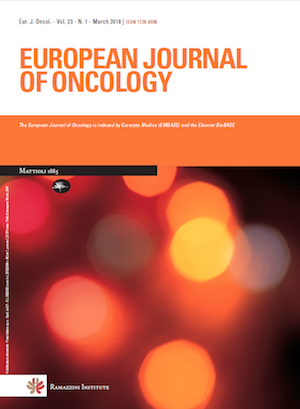A new frailty index as a risk predictor of morbidity and mortality: its application in a Surgery Unit
Keywords:
Index, Risk Predictor, Frailty, SurgeryAbstract
Background: It’s difficult to explain what frail patient means, because universal criteria for its identification and definition have never been drawn up. The whole scientific community is very interested to this issue of the potential effects that fragility may have on surgical and clinical outcomes. For this reason, we try to develop and validate the use of a new surgical frailty index (nsFI) to predict postoperative outcomes and mortality in General Surgery. Methods: The study was lead in the General Surgery Department of the “A.O.U. Mater Domini” of Catanzaro. The study was conducted using the database of the patients admitted in 2016. We calculated a score for each patient using data collected from medical records. Items of the Canadian Study of Health and Aging-frailty index (FI) were performed to develop a new frailty index to predict adverse postoperative clinical outcomes. Validation of our index was performed using the notorious mFI of Velanovich et coll., to confirm the proposed index. The resulting population was subdivided into 4 groups: not frail, mild, moderately and severely frail. Subgroups were created using gender, age, site of origin and type of pathology. Morbidity and mortality were evaluated after surgery. Results: A total of 481 patients were identified in accordance to inclusion criteria. According to our index 58% of this population was frail and 70% was over the age of 65. Biological frailty is correlated with the patient’s origin area, so 61,7% came from rural regions. The percentage of frail men and women was the same. Malignant diseases were found in 71,01% of frail patients. 18,20% developed postoperative complications, while 1.32% died after surgery. This new surgical frailty index demonstrates good discrimination in our cohort (AUROC=0.74) better than previously modified frailty index (AUROC=0.54). Conclusions: This new surgical frailty index can be used to guide decision-making when applied on general surgery department. Furthermore, we have identified the identikit of surgical frail patients.
Downloads
Published
Issue
Section
License
OPEN ACCESS
All the articles of the European Journal of Oncology and Environmental Health are published with open access under the CC-BY Creative Commons attribution license (the current version is CC-BY, version 4.0 http://creativecommons.org/licenses/by/4.0/). This means that the author(s) retain copyright, but the content is free to download, distribute and adapt for commercial or non-commercial purposes, given appropriate attribution to the original article.
The articles in the previous edition of the Journal (European Journal of Oncology) are made available online with open access under the CC-BY Creative Commons attribution license (the current version is CC-BY, version 4.0 http://creativecommons.org/licenses/by/4.0/).
Upon submission, author(s) grant the Journal the license to publish their original unpublished work within one year, and the non exclusive right to display, store, copy and reuse the content. The CC-BY Creative Commons attribution license enables anyone to use the publication freely, given appropriate attribution to the author(s) and citing the Journal as the original publisher. The CC-BY Creative Commons attribution license does not apply to third-party materials that display a copyright notice to prohibit copying. Unless the third-party content is also subject to a CC-BY Creative Commons attribution license, or an equally permissive license, the author(s) must comply with any third-party copyright notices.

